Search
Search Results
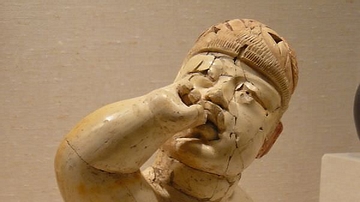
Image
Olmec "Baby" Figurine
A life-size ceramic 'baby' figurine from the Olmec civilization of Mexico, Mesoamerica, 12th-9th century BCE. The significance of these figures, often depicting infantile gestures, is not clear. They may represent deities or royalty. Provenance...
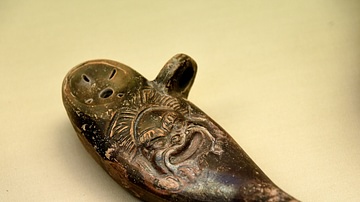
Image
Roman Baby Feeding Bottle
A baby feeding bottle decorated with a dramatic mask. Said to be from Pozzuoli, in modern-day Italy. Roman period, made in Italy, about 1st century CE. Bequeathed by Sir William Temple. (The British Museum, London).
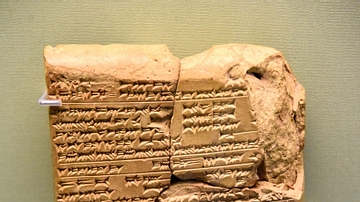
Image
Treatment Adive for a Fractious Baby
This tablet contains treatments, mostly in the form of ointments to soothe distressed and fractious babies. It also includes instructions for making miniature inscribed clay cylinder-amulets. From the library of Ashurbanipal at Nineveh, Northern...
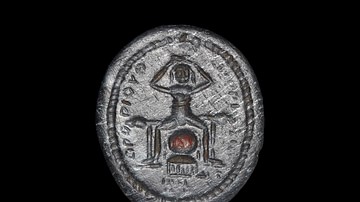
Definition
Eileithyia
Eileithyia (or Ilithyia) was the goddess of childbirth in Greek mythology, with the power to either help or hinder childbirth. She most famously played a role in the birth of Hercules and Apollo. Eileithyia was the daughter of Zeus and Hera...

Article
Childbirth in Ancient Rome
Childbirth in ancient Rome was considered the main purpose of marriage. Roman girls married in their early teens, and in elite society, some married before they reached puberty. The legal age for marriage was 12 for a girl; 15 was accepted...
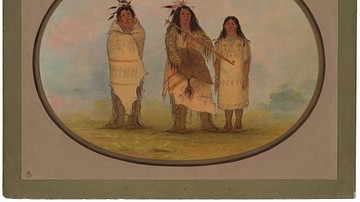
Article
The Life and Death of Sweet Medicine
The Life and Death of Sweet Medicine is a Cheyenne tale of the great prophet and law-giver Sweet Medicine who received the sacred Four Arrows, structure of government, and rules of society from Maheo, the Wise One Above, and predicted the...
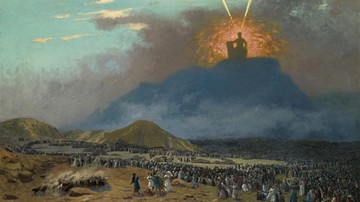
Definition
Moses
Moses (c. 1400 BCE) is considered one of the most important religious leaders in world history. He is claimed by the religions of Judaism, Christianity, Islam and Bahai as an important prophet of God and the founder of monotheistic belief...

Video
Why Did Europeans Enslave Africans?
Viewers like you help make PBS (Thank you ????) . Support your local PBS Member Station here: https://to.pbs.org/DonateORIG Subscribe to Origin of Everything! http://bit.ly/originsub Why were most slaves in America from West Africa? Slavery...

Article
Global Trade in the 13th Century
In the 13th century, astonishing quantities of spices and silk passed from the Far East to Europe. Exact amounts are not known, but spice popularity in both cuisine and medicine reached its historical peak during the Middle Ages in Europe...

Article
Norse-Viking Diet
In many depictions of Vikings, whether in film or other media, a group is often seen gathered around a flaming pit while an animal of some type – usually a boar – turns on a spit above. While the people of Scandinavia certainly...